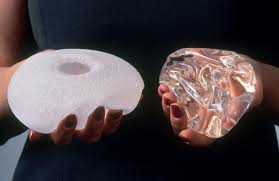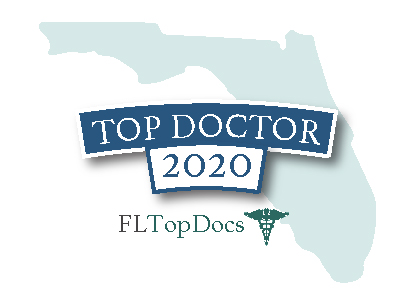
Social media and the mainstream media are full of posts and articles, respectively, regarding the issue of breast implant associated lymphoma, the ban in several countries of use of Allergan’s textured biocell implants, and, most recently, of Allergan’s voluntary removal from the U.S. market as well. Here are some facts about the situation.
FAQ’s about Breast Implant Associated Anaplastic Large Lymphoma (BIA-ALCL) of the breast
What is anaplastic large cell lymphoma of the breast?
Primary breast lymphoma, in the absence of breast implants, is an exceedingly rare cancer involving white blood cells, called lymphocytes, which are part of our lymphatic system, which helps fight off bacterial and viral infections. It is only one of a number of lymphomas. The incidence of breast lymphoma is estimated to be one in four million and it is almost exclusively found in women.
What is BIA-ALCL?
Breast implant associated anaplastic large cell lymphoma, or BIA- ALCL, is a type of breast lymphoma in women who have or who have had breast implants. It is not breast cancer. The word anaplastic means that the cells look very primitive and abnormal under the microscope. A connection between breast implants and ALCL was first noted around 2011. At first, there were so few cases that a relationship between implants and lymphoma was not recognized. With time, we have come to recognize this as a legitimate unique diagnosis although the role of implants in the development of BIA-ALCL is not yet clearly understood. Breast implants have never been linked to breast cancer.
How common is BIA-ALCL?
Compared to the normal risk of breast cancer in women, BIA-ALCL is rare. Women with textured breast implants have an estimated lifetime risk of 0.0012 to 0.045% for BIA-ALCL. The span in risk is due the different risk between implants. Compared to this, the normal lifetime risk of all women for breast cancer is 10-11%. Factors, such as obesity, family history of breast cancer, possession of the BRCA gene mutation, and more can increase this risk further. As of July 2019, 573 unique cases of BIA-ALCL have been reported worldwide out of an estimated 10 million women who have breast implants. This number will undoubtedly go up as we are now actively seeking cases in order to better understand this cancer. The estimated incidence of BIA-ALCL is 1-3 per million women per year with breast implants. It is a very rare cancer. The risk is the same for cosmetic breast augmentation patients and those who have had implants for reconstruction after breast cancer treatment.
What causes BIA-ALCL?
This has not been clearly determined but the primary theory is that a low grade, long standing inflammatory response around the breast implant may, over years, cause white blood cells, called lymphocytes, that are normally found in fluid around implants, to become cancerous. Another theory is that bacterial colonization around implants, producing something called biofilms, may play a role as well. The time frame for this to occur appears to be on the order of 8-10 years.
Can all implants cause BIA-ALCL?
Hypothetically, yes. The fact is that, so far, in all cases of BIA-ALCL where this information is available, the woman has, or has had at some time, textured breast implants. No case of BIA-ALCL has been reported in a woman who has had only smooth implants.
What is the difference between textured and smooth breast implants?
Smooth implants are exactly that; the surface of the implant is smooth and shiny. The surface of textured implants is “fuzzy”, i.e. looks and feels rough. Surface texturing of implants was developed in hopes that this would modify how scar forms around the implant. This scar, called a capsule, is present in all implant patients. In some patients, the scar can contract, squeezing the implant and causing the breast to feel hard and look distorted. This has always been one of the most common problems with breast implants. Not all textured implants are alike. Some implants have a fine texture, e.g. Mentor Siltex implants, while others are more coarse, e.g. Allergan Biocell implants. The manner of texturing the implant differs too. Allergan uses a salt technique that creates a rougher surface whereas Mentor uses an extrusion or molded technique. Surface texturing has proved to be of little use in preventing contracture of the capsule. It is used almost exclusively on anatomically shaped implants to keep them from spinning or flipping around in the implant pocket.
Why have Allergan implants been singled out among implant manufacturers?
Of those women with BIA-ALCL whose implants have been identified, 90% have been Allergan Biocell implants. It is theorized, but not proven, that the more aggressive texturing of the Biocell implants and the technique used, allow, over time, for microparticles of silicone to separate from the surface of the implant and, in some way, induce the cancerous changes in lymphocytes. The other 10% of cases is divided between Mentor Siltex implants (7%) and Sientra textured implants (3%).
How do I know if I might have BIA-ALCL?
The classic presentation is of a women with breast implants who, after several years, develops swelling of one or both breasts. This is due to fluid around the implant, in which lymphoma cells are typically found. A less common presentation is that of a mass in the breast. Only rarely are there systemic symptoms, such as pain, fatigue, malaise, etc. There is no blood test or other screening method to detect BIA-ALCL. Mammograms are not helpful.
What is the treatment of BIA-ALCL?
The recommended treatment is to remove the implants and the surrounding capsular scar. Of those women who have been treated for BIA-ALCL, 93% are disease free at 3 years. In a few, more advanced cases, chemotherapy may be recommended. Of those 573 women with BIA-ALCL that have been reported, 33 have died. BIA-ALCL is considered to be an indolent, relatively slow growing cancer.
If I have textured implants, should I have them removed?
This is, as they say, the $64,000 question. You have to weigh the risks of unnecessarily removing implants against the risk of developing BIA-ALCL. If you are going to remove implants for the purpose of preventing BIA-ALCL, then you have to do more than just remove the implants; you have to remove the scar tissue around them, the capsule, as well. There have been cases of BIA-ALCL in women who once had textured implants and had them replaced with smooth implants, but without total removal of the capsule. Capsulectomy is a difficult operation if properly done. You have all the risks of surgery- infection, bleeding, poor healing, anesthetic, and even life threatening complications. Then you have the issue of what to do next. Do you put in replacement implants immediately, later, or at all? If you take implants out, the breasts will typically look deflated and may be wrinkled and unattractive. The position of the FDA is that women with textured implants who are not having problems with them should not seek to have them removed simply because of the small theoretical risk of BIA-ALCL. If one views the question strictly from the standpoint of relative risk, given that women have a one in ten chance of developing breast cancer in their lifetime, should women seek to have their breasts removed to avoid this? The question of whether you should replace/remove your current implants or not is one you should discuss with your plastic surgeon.
Richard T. Bosshardt, MD, FACS





